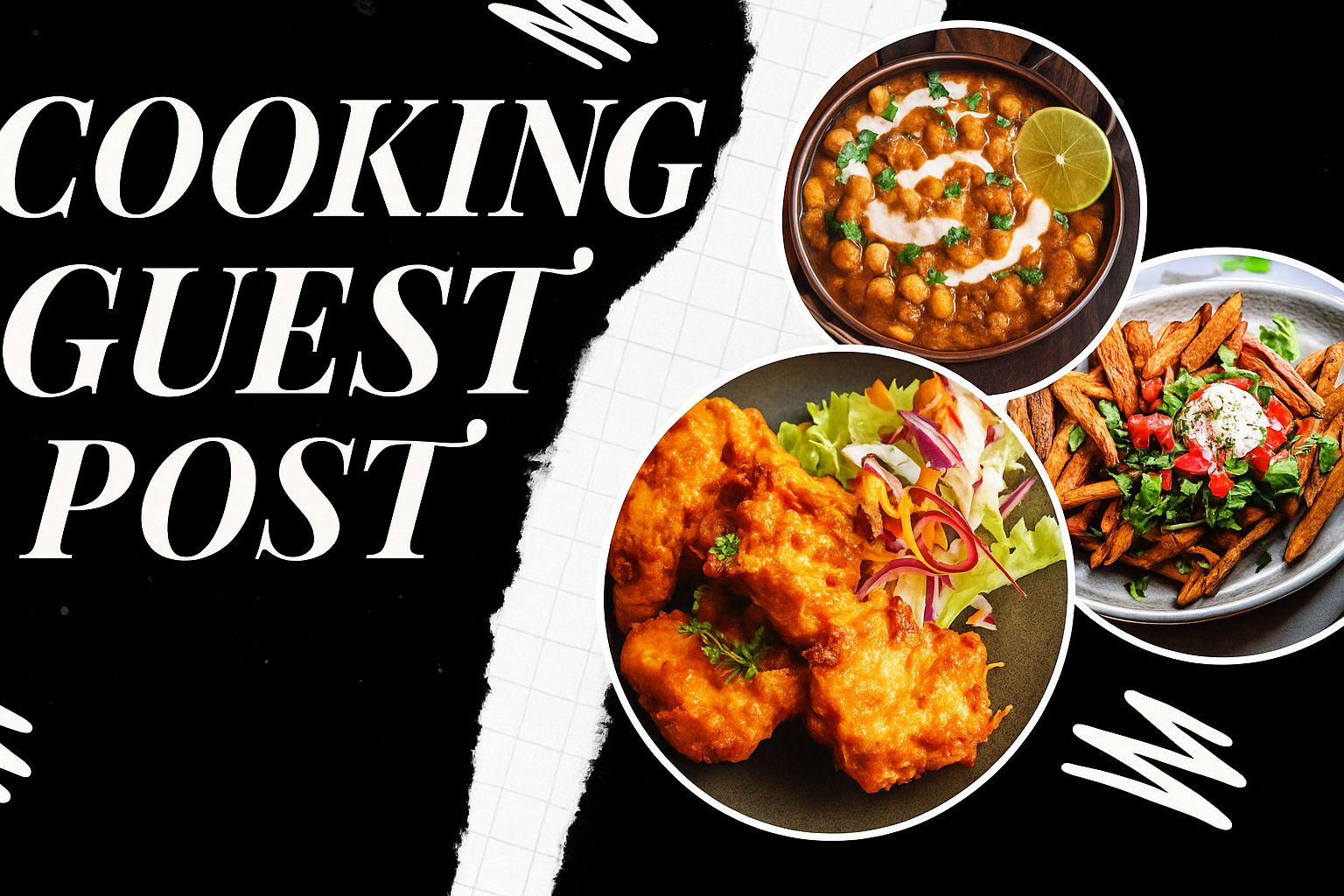



In 2011, I started my first food blog as a side hustle, sharing family recipes and culinary experiments from my tiny apartment kitchen. Back then, SEO was a buzzword, and guest posting seemed like a tactic only marketers used. Fast forward to today, my recipe blog attracts over 180K monthly visits, ranks for thousands of keywords, and generates recurring brand deals all thanks to one powerful growth strategy: cooking guest posts.
If you're a food blogger, chef, or culinary brand looking to expand your reach, establish authority, and rank higher in search engines, this guide is your roadmap. Let’s explore how cooking guest posts work, how to do them right in 2025, and how they can transform your digital presence plate by plate.
A cooking guest post is an article you write for another blog or publication in the food or lifestyle niche, often in exchange for a contextual backlink to your own website.
📊 Stat: According to Ahrefs (2025), 91% of food blogs with over 50K monthly visits have done guest posting as part of their link-building strategy.
After executing over 200+ guest posts for food brands and bloggers, here's the framework I follow:
Example Email Template:
Subject: Guest Post Idea: “10-Min Mediterranean Recipes for Busy Weeknights”
Hi [Name],
I’m [Your Name], a food blogger with over 5 years of experience in quick and healthy cooking. I love your recent post on [their article] super helpful!
I’d love to contribute a unique guest post for your audience. How about a piece titled:
“10-Min Mediterranean Recipes for Busy Weeknights”
It’ll include original photos, SEO-optimized content, and tips from my personal kitchen experiments. Let me know if that sounds good.
Thanks for considering!
Warm regards,
[Name] | [Website Link]
Google’s June 2025 update prioritizes:
✅ First-hand experience: Share your own tips, mistakes, and recipes
✅ Unique content: Avoid reusing content Google detects duplication across domains
✅ Author bios with credentials: Showcase any certifications (e.g., nutritionist, chef training)
Example:
When writing for HealthyFamilyKitchen.com, I shared my experience transitioning to plant-based cooking after my daughter developed dairy sensitivity. That story made the article relatable and highly shareable plus, it landed on Google Discover.
Sarah, a recipe creator from Oregon, landed a guest post on The Spruce Eats. Within a month, she gained 7K new visitors, 2K email subscribers, and was contacted by a publisher to write a cookbook.
Chef Malik wrote guest posts for regional food blogs. His expert grilling techniques were picked up by a local newspaper, which later featured him in a weekend column his restaurant saw a 20% uptick in reservations.
A spice brand collaborated with bloggers to publish original recipes featuring their products. Each guest post included a CTA link to their Shopify store. Result? A 35% increase in conversion rate on their product pages.
✅ Use original food photography – Stock photos are a red flag.
✅ Include nutritional info – It adds authority and Google loves structured data.
✅ Link to helpful tools – Like conversion calculators or downloadable recipe cards.
✅ Cross-promote on socials – Repost the guest article on your Instagram, TikTok, or Pinterest.
✅ Track performance – Use UTM links and Google Analytics to measure impact.
Q1: What is a cooking guest post?
A cooking guest post is an article written for another food blog or culinary site, usually sharing recipes, tips, or techniques, with a backlink to your own blog or brand.
Q2: Where can I publish cooking guest posts?
Great places include food blogs, health & wellness sites, lifestyle platforms, and nutrition-focused publications. Look for sites that accept contributions.
Q3: Are guest posts still effective for SEO in 2025?
Yes, when done ethically. Google rewards high-quality, relevant guest posts with real author experience and natural backlinks.
Q4: How do I pitch a guest post as a food blogger?
Keep it personal, brief, and focused on value. Reference a recent post, suggest a relevant topic, and explain how your experience adds depth.
Q5: Can brands also benefit from cooking guest posts?
Absolutely. Food brands can publish recipes, how-tos, and expert guides to reach new audiences and boost product visibility.
Q6: Should I include original photos in guest posts?
Yes. Original, high-quality photos significantly increase acceptance rates and reader engagement.
Q7: How do I track guest post success?
Use UTM parameters, Google Analytics, and backlink tracking tools like Ahrefs or SEMrush to measure traffic, SEO gains, and conversions.
Q8: How many backlinks should a guest post include?
Generally, one contextual backlink to your site is enough. Some platforms allow more—check their guidelines.
Q9: What content works best in cooking guest posts?
In-depth recipes, kitchen hacks, seasonal meal ideas, nutrition insights, and personal stories resonate most with readers.
Q10: Can I republish my guest post on my blog?
Avoid duplicate content. Instead, write a summary and link back to the original guest post.
Whether you're a seasoned food influencer or a passionate home cook starting out, guest posting gives you more than a backlink it gives you visibility, validation, and voice in a crowded digital kitchen.
Done right, a single cooking guest post can be the bridge between your personal blog and becoming the next big name in food media.
Provide clear contact information, including phone number, email, and address.

Discover powerful finance guest posting tactics for 2025. Build authority, earn backlinks, and drive organic growth with proven strategies.
Read More
Boost your academic brand with education guest posting. Build authority, get quality backlinks, and grow your traffic with expert content strategies.
Read More
Learn how car guest posts help auto websites rank higher, earn backlinks, and build topical authority with proven strategies from industry experts.
Read More

Effective SEO strategies not only elevate a website's visibility but also drive targeted traffic, enhance user experience
All Right Reserved @ 2004 - 2025
